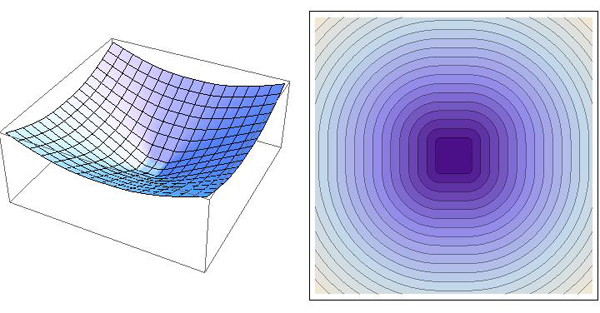Let $f(x,y)$ define a surface $S$ in $\mathbb{R}^3$ with a unique local minimum at $b \in S$. Suppose gradient descent from any start point $a \in S$ follows a geodesic on $S$ from $a$ to $b$. (Q1.) What is the class of functions/surfaces whose gradient-descent paths are geodesics?
Certainly if $S$ is a surface of revolution about a $z$-vertical line through $b$, its "meridians" are geodesics, and these would be the paths followed by gradient descent down to $b$. So the class of surfaces includes surfaces of revolution. But surely it is wider than that?
(Q2.)
One could ask the same question about paths followed by
Newton's method, which in general are different from gradient-descent
paths, as indicated in this Wikipedia image:
 Gradient descent: green.
Newton's method: red.
Gradient descent: green.
Newton's method: red.
(Q3.) These questions make sense in arbitrary dimensions, although my primary interest is for surfaces in $\mathbb{R}^3$.
Any ideas on how to formulate my question as constraints on $f(\;)$, or pointers to relevant literature, would be appreciated. Thanks!



